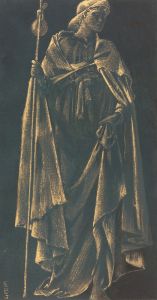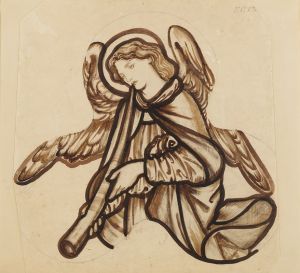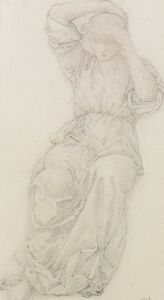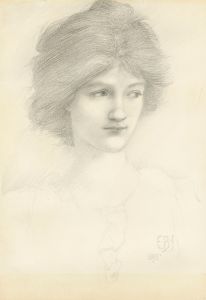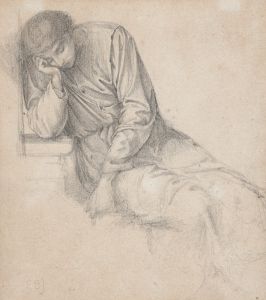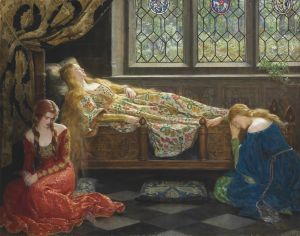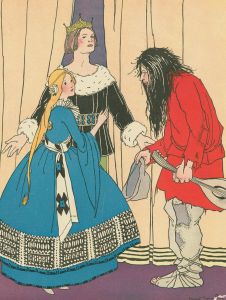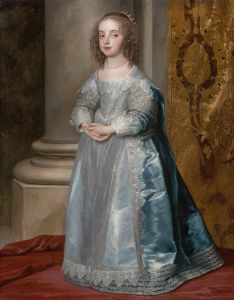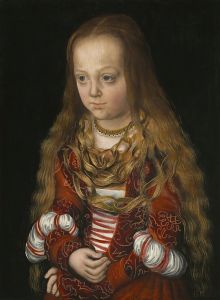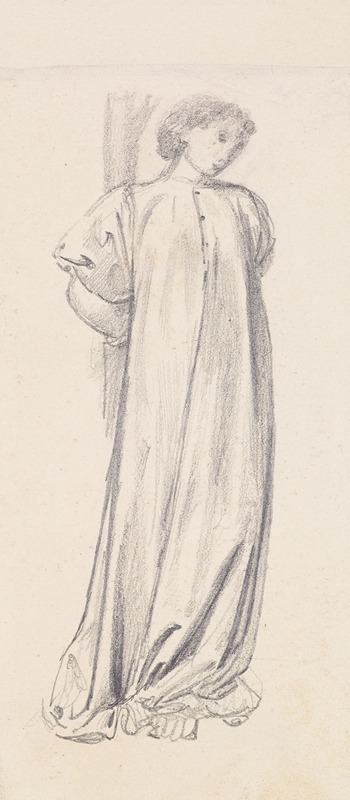
St George Series – Study of the Princess for ‘The Princess chained to the Tree’
A hand-painted replica of Sir Edward Coley Burne-Jones’s masterpiece St George Series – Study of the Princess for ‘The Princess chained to the Tree’, meticulously crafted by professional artists to capture the true essence of the original. Each piece is created with museum-quality canvas and rare mineral pigments, carefully painted by experienced artists with delicate brushstrokes and rich, layered colors to perfectly recreate the texture of the original artwork. Unlike machine-printed reproductions, this hand-painted version brings the painting to life, infused with the artist’s emotions and skill in every stroke. Whether for personal collection or home decoration, it instantly elevates the artistic atmosphere of any space.
"St George Series – Study of the Princess for ‘The Princess chained to the Tree’" is a preparatory study by the British artist Sir Edward Coley Burne-Jones. This work is part of a larger series of paintings known as the "St George Series," which Burne-Jones created between 1865 and 1867. The series depicts various scenes from the legend of Saint George and the Dragon, a popular subject in medieval and Renaissance art.
Sir Edward Coley Burne-Jones (1833–1898) was a prominent figure in the Pre-Raphaelite Brotherhood, a group of English painters, poets, and critics founded in 1848. The Pre-Raphaelites sought to return to the detail, intense colors, and complex compositions of Quattrocento Italian art. Burne-Jones was known for his romantic and mythological subjects, often drawing inspiration from classical literature, medieval legends, and contemporary poetry.
The "St George Series" tells the story of Saint George, a Christian martyr who is best known for slaying a dragon that demanded human sacrifices. According to the legend, Saint George rescues a princess who has been offered to the dragon as a sacrifice. This narrative has been a rich source of inspiration for artists throughout history.
In "Study of the Princess for ‘The Princess chained to the Tree’," Burne-Jones focuses on the figure of the princess, who is depicted in a moment of vulnerability and anticipation. The study captures the delicate features and flowing garments of the princess, emphasizing her grace and beauty even in a state of distress. The attention to detail in her expression and posture reflects Burne-Jones's meticulous approach to his work.
The study serves as a preparatory work for the final painting "The Princess chained to the Tree," which is one of the key pieces in the "St George Series." In the final composition, the princess is shown chained to a tree, awaiting her fate as the dragon approaches. Saint George, the heroic figure, is depicted arriving to save her, symbolizing the triumph of good over evil.
Burne-Jones's use of rich, jewel-like colors and intricate patterns in the final painting is characteristic of his style. His works often feature elongated figures and a dreamlike quality, drawing viewers into a world of fantasy and legend. The "St George Series" is considered one of Burne-Jones's significant achievements, showcasing his ability to blend narrative and decorative elements seamlessly.
The preparatory study of the princess highlights Burne-Jones's skill in capturing human emotion and his dedication to the preparatory process. Studies like this one were essential for Burne-Jones to refine his compositions and ensure that each element of the final painting contributed to the overall narrative and aesthetic impact.
Overall, "St George Series – Study of the Princess for ‘The Princess chained to the Tree’" exemplifies Burne-Jones's artistic vision and his contribution to the Pre-Raphaelite movement. Through his detailed studies and final compositions, Burne-Jones brought to life the timeless legend of Saint George, leaving a lasting legacy in the world of art.






